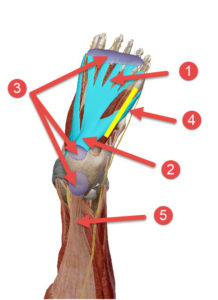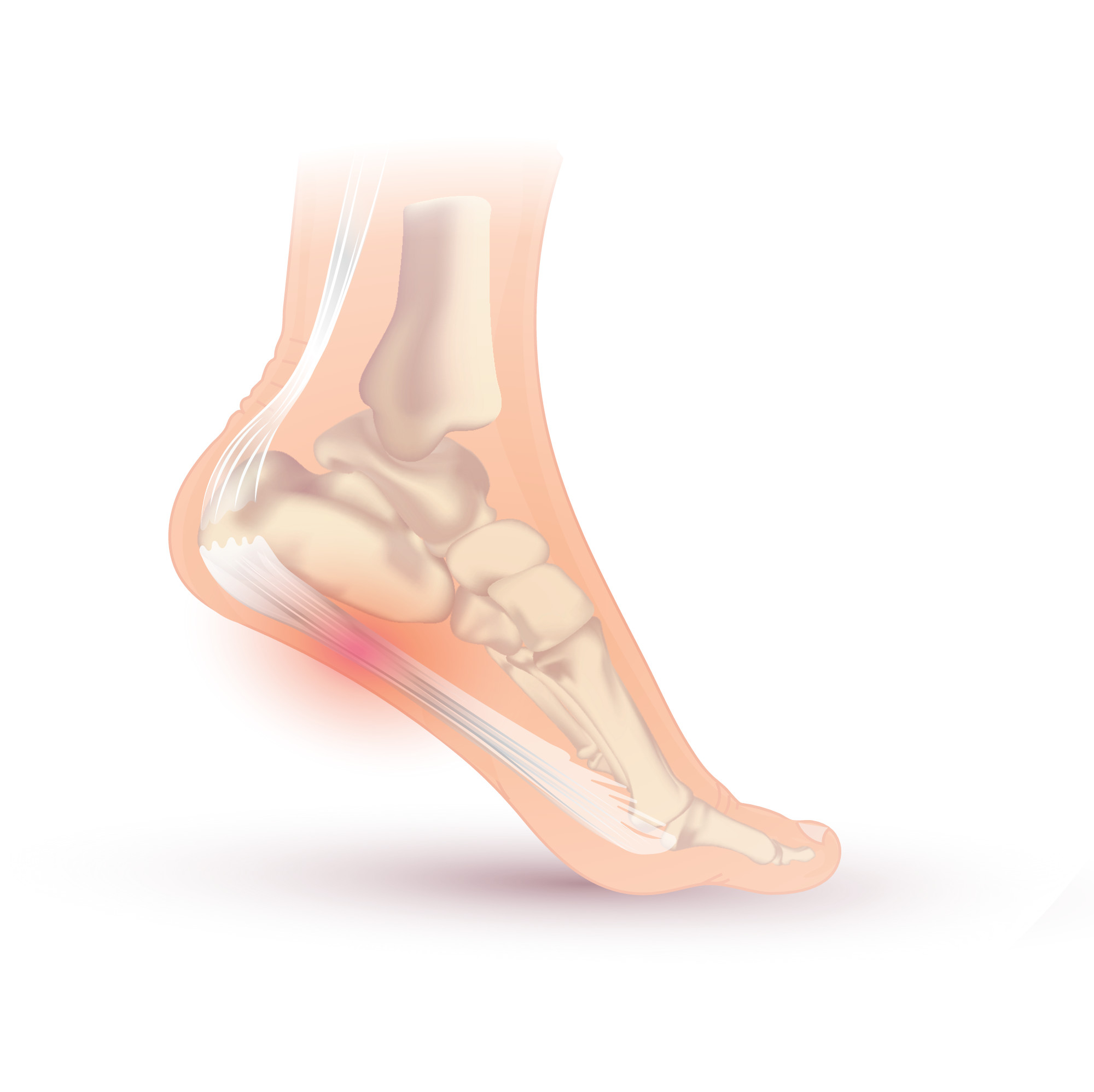[vc_row][vc_column][vc_column_text]
Plantar Fasciitis Tuning Fork Protocol:
Let’s discuss the term Plantar Fasciitis first to understand its meaning. The Plantar Fascia refers to the fibrous bands that extend from the heel to the toes on the bottom of the foot or plantar surface. The Plantar Fascia is more accurately called the Plantar Aponeurosis which are very thin tendon-like fibrous tissue that are used in places tension is needed between muscle or bone without the need for a lot of blood supply and nerves. We also have these aponeurosis in the palms of our hands, under out scalp, and in our mid-section across our abdomen and back. Its main purpose for the bottom of the foot is to act as a shock absorber and is responsible for creating the arch in our foot.
The term fasciitis means there is inflammation involved somewhere, and there are many theories on the cause and possible solutions for relieving the inflammation. In the past, we used to think that plantar fasciitis was caused independently from over extension of this plantar aponeurosis and the treatment was localized to the bottom of the foot with anti-inflammatories, rest, cold remedies, stretching, orthodics, and devices to keep it stretched while sleeping (the socks).
Fascia researchers and movement experts like Thomas Myers of Anatomy Trains have determine through very meticulous dissection of the most outer layer of fascia called the superficial fascia layer that there are bands of fascia connecting parts of your body that were previously thought to be separate. There is one fascia “meridian” stretching from the bottom of your foot, up the back of the leg, across the buttocks, up through the lower back, the neck, over the skull and ends at the forehead. This is called the Superficial Back Line (SBL). A quick Google image search will show the exact route of the SBL.
What was thought to be sciatic pain ends up cascading downward through the knee and eventually affecting the plantar surface because tension and tightness in the entire fascia chain will continue to tighten the rest of the chain especially if you change your posture and movement habits due to pain over time. Fascia fibers keep tightening until eventually it reaches the end of the line.
I tell you all of this background because it will be important to your treatment. We have to start at the plantar part to gain immediate pain relief, but there is more work to do especially if the inflammation is caused by prolonged tightness all the way up the leg to the back. This plantar fascia was just the most recent point of failure.
 In reference to the image, start with a weighted tuning fork around the 128hz range and place it in several locations along the aponeurosis band from numbers 1 to 2 about a half inch apart. Then the purple areas are bursa sacs that are suppose to help with movement where friction is possible. When things get tight, these sacs become inflamed and harden. Place your tuning fork on these spots next (3).
In reference to the image, start with a weighted tuning fork around the 128hz range and place it in several locations along the aponeurosis band from numbers 1 to 2 about a half inch apart. Then the purple areas are bursa sacs that are suppose to help with movement where friction is possible. When things get tight, these sacs become inflamed and harden. Place your tuning fork on these spots next (3).
I gave you the background for a reason. One of the most misunderstood part of the plantar area is that the fascia layer covers the entire foot, and the one area that controls the stability of the foot is a very thick layer on the outer edge of the bottom of the foot where you see the yellow line. Place your tuning fork in a line along this edge with a little bit of pressure. Half inch placements. Then we have to start working our way up the leg by placing the tuning fork on the achilles tendon because the Superficial Back Line fascia actually runs parallel to this tendon.
This is only the first step. The rest of the leg and lower back still need attention since they are all related. But we have to start somewhere and take care of the immediate issue first.
Featured image on the post is: By Injurymap [CC BY 4.0 (https://creativecommons.org/licenses/by/4.0)], via Wikimedia Commons[/vc_column_text][/vc_column][/vc_row]


